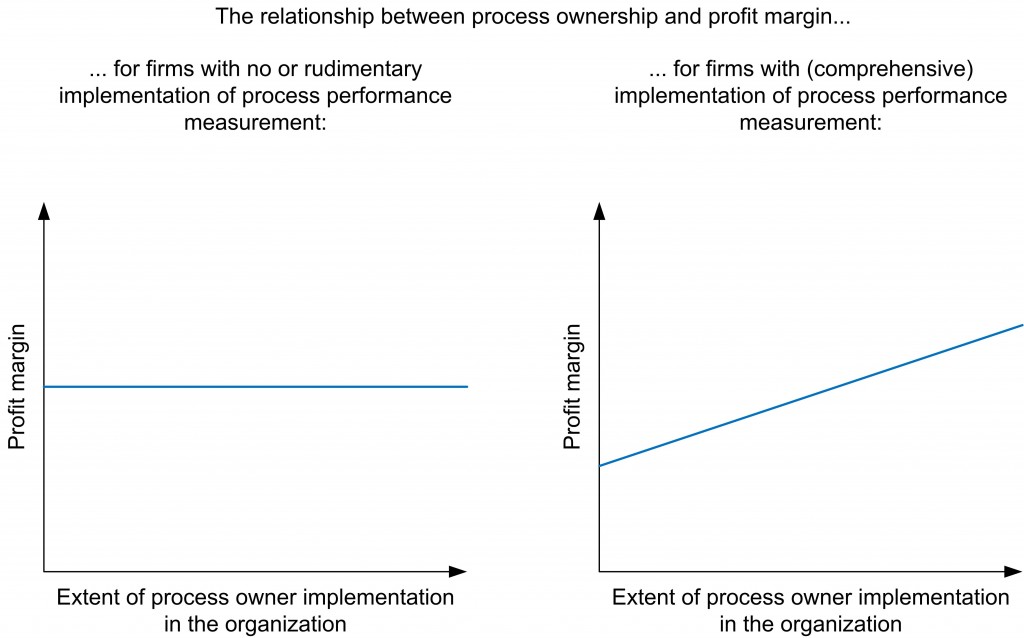This article summarizes the study “Process Ownership, Process Performance Measurement and Firm Performance” by Kohlbacher M. and Gruenwald S., to be published in the International Journal of Productivity and Performance Management, Vol. 60, Issue 7, 2011.
Process performance measurement and the process owner role are two key components of business process orientation. The article investigates whether the implementation of process owners and process performance measurement can improve firm performance. The study was conducted with 132 randomly selected manufacturing companies in Austria. For every firm one executive (CEO, CIO or quality manager) was interviewed.
The following items were used to measure to which degree the role of the process owner is established in the organization:
- Is a process owner assigned to each business process?
- Are process owners experienced managers/leaders?
- Are process owners responsible for continuous improvement of their processes and do they perform this task proactively?
- etc.
The following items were used to measure to which degree measurement of process performance is carried out in the organization:
- Are performance indicators defined for business processes?
- Are process performance indicators derived from enterprise goals and/or from (internal) customer requirements?
- Are improvement actions actually initiated if poor process performance is encountered?
- etc.
Results of the study:
The contingency table of the process owner role and process performance measurement is illustrated below:
| Process Performance Measurement | ||||
| Low implementation | High implementation | Total | ||
| Process ownership | Low implementation | 46 (34.8%) |
5 (3.8%) |
51 (38.6%) |
| High implementation | 34 (25.8%) |
47 (35.6%) |
81 (61.4%) |
|
| Total | 80 (60.6%) |
52 (39.4%) |
132 (100%) |
|
In approx. 35% of the firms, both process performance measurement and process owners are virtually absent. Approx. 26% of the interviewed firms implemented process owners in their organization, but do not or only sparely measure the performance of their business processes. Approx. 4% of the organizations implemented process performance measurement, but have no or only a rudimental implementation of the process owner role. Finally, approx. 36% of the firms have both process performance measurement and process owners in place.
The core finding of the study is that implementing process performance measurement or the process owner role only is insufficient to achieve high performance. Organizations must implement both concepts (process performance measurement and the process owner role) to reap the fruits of process management. This finding is illustrated in the following figure:
The left illustration applies for firms with no or rudimentary implementation of process performance measurement. These firms apparently cannot profit from establishing process owners. The right illustration applies for firms which (comprehensively) implemented the concept of process performance measurement. It can be said that those firms benefit from establishing the process owner role in their organization.
In summary, the empirical evidence shows that both concepts – process ownership and process performance measurement – must be present in the organization in order to gain higher organizational
performance.
